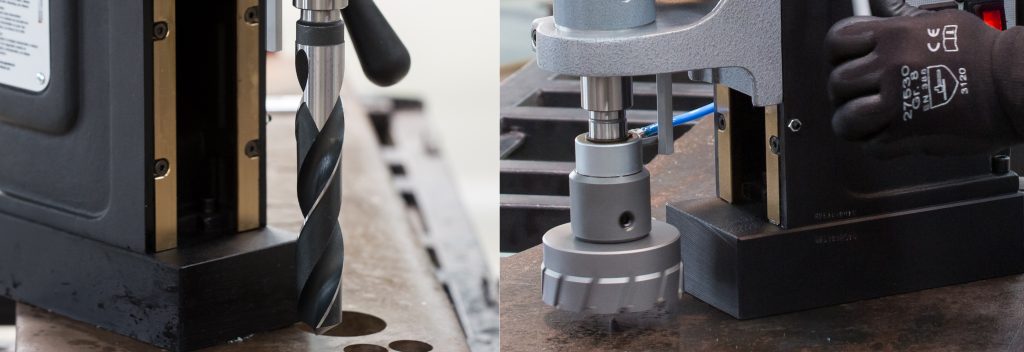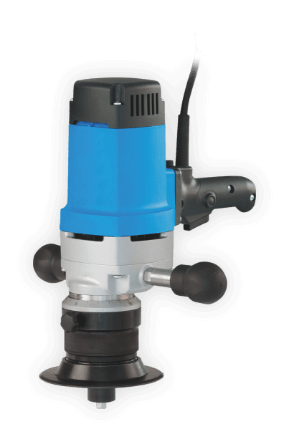Comparing Twist Drills with Annular Cutters
Twist drills and annular cutters are both tools used for drilling holes in various materials, but they have distinct differences in terms of design, application, efficiency, and performance. Let’s compare them in different aspects:
 Design:
Design:
Twist Drill: A twist drill is a common and simple design consisting of a pointed tip, spiral flutes, and a cylindrical shank. The flutes are responsible for removing material from the hole as the drill rotates.
Annular Cutter: An annular cutter or broach core cutter, has a more specialized design. It’s a hollow cylindrical tool with cutting teeth on the circumference and a center pilot pin. As the cutter rotates, it removes a solid slug or core of material, leaving a clean, smooth hole.
Application:
Twist Drill: Twist drills are versatile and suitable for drilling smaller holes in a wide range of materials, including metal, wood, plastic, and more. They are commonly used in DIY projects, general maintenance, and light manufacturing.
Annular Cutter: Annular cutters are primarily designed for drilling larger and deeper holes, especially in metal. They excel at creating holes in thick steel, stainless steel, and other tough materials. They are commonly used in fabrication, construction, and metalworking industries.
Hole Quality:
Twist Drill: While twist drills are efficient for small holes, they can produce rougher holes with burrs and irregularities, especially in harder materials.
Annular Cutter: Annular cutters produce higher-quality holes with smooth finishes and minimal burring. This is because they remove material from the circumference rather than forcing it out through flutes.
Efficiency:
Twist Drill: Twist drills are efficient for smaller holes, but they may require more force and time when drilling larger holes due to their design.
Annular Cutter: Annular cutters are more efficient for larger holes, as they remove material quickly and generate less heat due to their cutting method. This can lead to faster drilling times and increased tool life.
Precision:
Twist Drill: Twist drills can be accurate for general applications, but they might wander slightly when starting the hole, leading to less precise positioning.
Annular Cutter: Annular cutters offer better precision due to their center pilot pin, which helps guide the cutter accurately into the material, reducing the chances of wandering.
Tool Longevity:
Twist Drill: Twist drills can wear out relatively quickly when drilling tough materials or at high speeds due to friction and heat buildup.
Annular Cutter: Annular cutters are built to withstand the demands of drilling through tough materials, resulting in longer tool life and fewer instances of premature wear.
In summary, the choice between a twist drill and an annular cutter depends on the specific application and the size and material of the hole you need to create. Twist drills are more versatile for general use, while annular cutters excel in producing precise, clean, and efficient holes in larger dimensions, especially in tough materials like metal.










